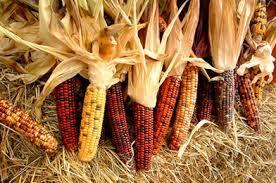Salado Agriculture: Producing Food in the Sonoran Desert
Oct 01,2015
Down below the radiant orange cliffs and bordered by the Sierra Anacha Mountain range lies the shimmering teal waters of the Tonto Basin’s largest lake. Just a mere 110-years old, Lake Roosevelt attracts hundreds of people to its sandy shores each year where their motor boats crisscross back and forth creating waves large enough to surf. It is almost inconceivable to visitors, though, when I explain to them at Tonto National Monument that Lake Roosevelt wasn't always here given it's large size.
During America’s progressive era, concern rose for the conservation of agricultural values in urbanized areas. In effort to draw more European settlers to the west, visionary John Wesley Powell proposed to increase the Tonto Basin’s water supply which would lead to more productive irrigation systems for modern farmers. His proposal was finally put into action in 1905 when President Theodore Roosevelt initiated the construction of the Roosevelt Dam and Roosevelt Lake was born. In addition, a smaller lake known as Apache Lake was also created by the dam and sits adjacent to the historical Apache Trail that weaves its way through the Mazahtzal Mountains.
Before the innovation of the Roosevelt Dam, though, Roosevelt Lake and Apache Lake were simply known as the Salt River. To the first settlers who entered the Tonto Basin, the Salt River shown as a meager strip of limited water incapable of satisfying human needs. However, to Native American groups such as the Apache and prehistoric Salado, the Salt River was their salvation in an unforgivable environment such as the Sonoran Desert.
For generations, the Apache and Salado passed down the ancient wisdom of dry farming which they would have been unable to achieve had it not been for the Salt River. Ancient canals, carved out by the hardworking hands of the people, carried water from the swollen river during the monsoon season to the crops they had sewn in the valley. Primary crops sewn by the people included corn, squash, as well as four different types of beans for food and cotton for clothing. Men busily worked the land from sunrise to sunset every day taking delight in the fruit of their labors. Despite the desert's dry environment, growing seasons were surprisingly long with a maximum of up to 300 days per year. During the rest of the year when growing seasons were poor, the people looked to their desert shrubbery and tree to aid their appetites.
Through hard work and patience, the Apache like the Salado before them were able to live contently in the Tonto Basin until they were forced to abandon the region. Still, even in an environment as unforgiving as the Tonto Basin the Apache and Salado have shown me that even a little can mean a lot.
Sources:
Dallett, N.C. “One Land, May People” At the Confluence of Change: A History of Tonto National Monument. © Nancy C. Dallett. Western National Parks Association. Tucson, AZ. (2008).
Houk, R. Salado: Prehistoric Cultures of the Southwest. © 1992 Western National Parks Association. Tucson, AZ. Printed in Singapore. (1992).
Photo credit: www.germanempire.imotor.com





